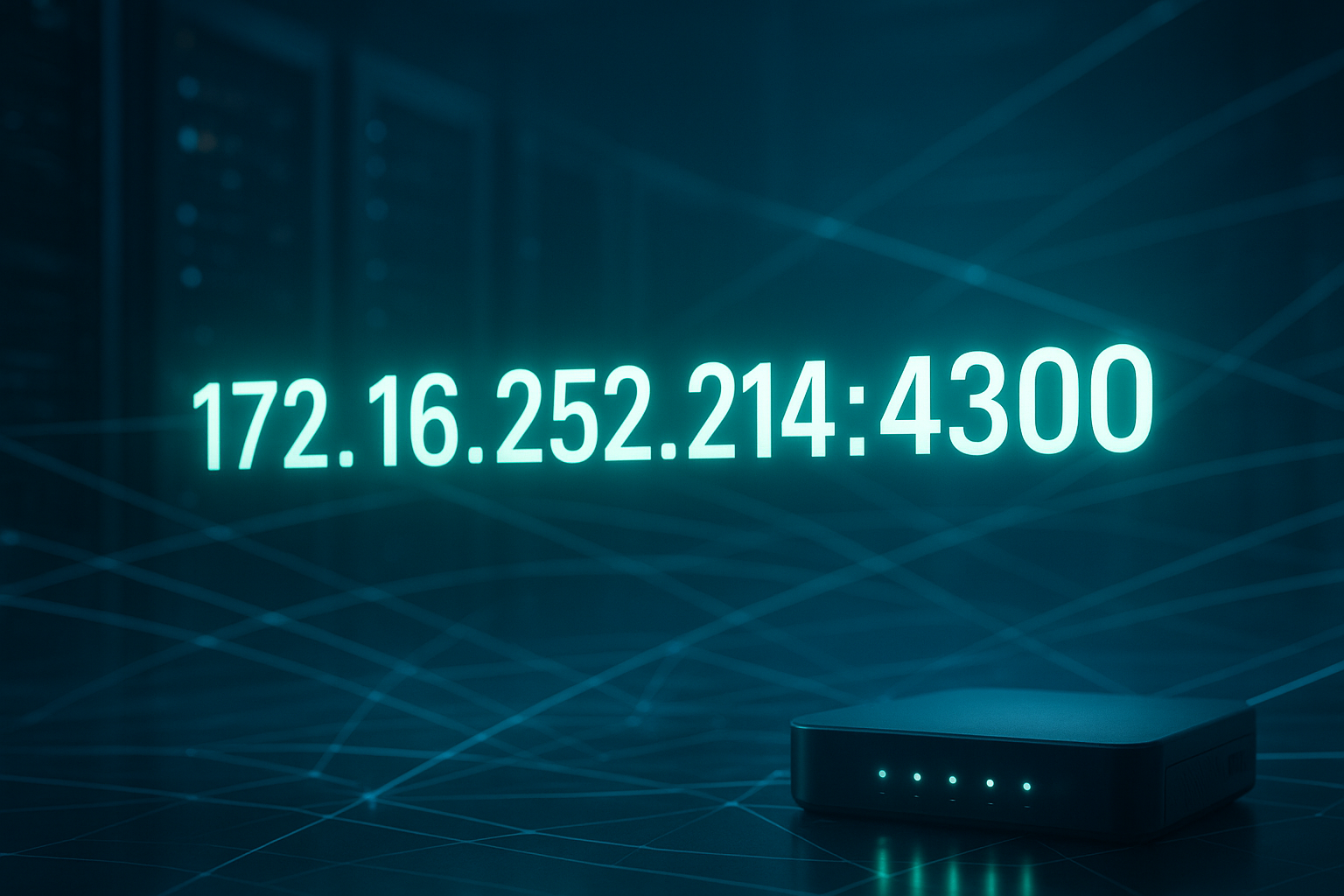The address 172.16.252.214:4300 represents a private IP address (172.16.252.214) combined with a network port number (4300). Together, they identify a specific service or device operating within a local area network (LAN).
Private IP addresses like this one are commonly used in corporate intranets, schools, and other closed network environments where internal communication is required but exposure to the public internet is not desired.
What Is 172.16.252.214?
The IP 172.16.252.214 falls within the private IP range of 172.16.0.0 to 172.31.255.255, as defined by the Internet Assigned Numbers Authority (IANA).
Private IPs are not routable on the public internet, meaning they can only be used internally.
A few typical uses include:
- Local servers (e.g., file, application, or web servers)
- Internal management consoles
- Development or testing environments
- Virtual machines or container networks
What Does Port 4300 Represent?
The port number identifies which specific service or process on the device is being accessed.
Each port allows multiple services to run on one IP address without conflict.
For example:
- Port 80 → HTTP (web traffic)
- Port 443 → HTTPS (secure web traffic)
- Port 22 → SSH (secure shell access)
- Port 4300 → Custom or application-specific service
Since port 4300 is not a standard, IANA-assigned port, it usually corresponds to a custom application, such as:
- A proprietary software service
- A monitoring tool
- A remote management interface
- An internal API endpoint
How Connections Work
When a user or system connects to 172.16.252.214:4300, it typically follows this flow:
- The client sends a request to the device at IP
172.16.252.214. - The request is directed specifically to port
4300. - The application listening on that port receives and responds to the request.
Such communication happens entirely within the private network unless special routing (like VPN or port forwarding) is configured.
Security Considerations
Because private IPs are internal, they are shielded from the internet by default. However, they can still pose risks if:
- Weak authentication is used.
- The service running on the port has vulnerabilities.
- Misconfigured routers or firewalls expose internal IPs externally.
To secure systems using IPs like 172.16.252.214:4300, it’s important to:
- Limit access to authorized users only.
- Keep software updated.
- Monitor traffic for unusual activity.
- Implement internal firewalls or access control lists (ACLs).
Common Use Cases
- Intranet applications: Internal web apps or dashboards.
- Database or API connections: Services communicating within the same subnet.
- Testing and staging environments: Developers using non-public IPs for trial runs.
- IoT or embedded systems: Devices communicating within a private network.
FAQs
1. Is 172.16.252.214:4300 accessible from the internet?
No. It is a private IP address, meaning it can only be accessed within the internal network unless exposed through specific network configurations.
2. What does the “:4300” part mean?
The colon and number indicate a port, which specifies which application or service to communicate with on that device.
3. How can I find out what service is running on port 4300?
You can use network tools such as:
netstat -an(on Windows)ss -tulnorlsof -i :4300(on Linux/Mac)
These commands show which process is using that port.
4. Can multiple devices use the same port 4300?
Yes, multiple devices can use the same port number as long as they have different IP addresses.
5. Is port 4300 safe?
Port 4300 itself isn’t inherently unsafe—it depends on the application running on it. If it’s properly secured, authenticated, and behind a firewall, it’s safe to use.
6. How can I connect to 172.16.252.214:4300?
You can connect using the relevant protocol or client (for example, a browser, custom app, or API client) — but only if you’re within the same private network or connected via VPN.
7. Why use a private IP instead of a public one?
Private IPs are used to protect internal resources from external threats and to save public IP space. They’re ideal for internal systems that don’t need internet exposure.
Conclusion
The address 172.16.252.214:4300 is a great example of how private IP addressing and custom ports work together to support secure, flexible communication within a local network. While invisible to the public internet, such configurations power the backbone of most modern IT infrastructures—from office networks to data centers.
Another Topic To Read P13x13T Explained: Next-Gen AI & Data Processing Framework

